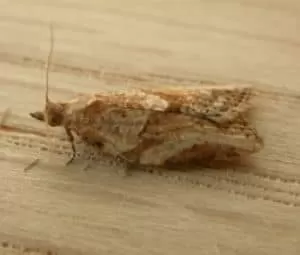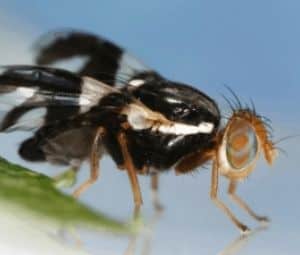Living in the tropics, you get to grow a wide variety of fruits that canʻt be found anywhere else in the world. In fact, there are many microclimates in the tropics that will let you push the envelope of what you can grow, like traditionally temperate climate fruits.
Apples do grow in tropical climates such as Hawaii. Three of the best apple varieties to grow in the tropics are Dorsett Golden, Anna, and Fuji. These varieties can withstand the heat that is standard in the tropics, but they do even better in select microclimates, distinctly elevations above 1500’.
It is estimated that there are over 7500 cultivars of Apple but when you decide to grow apple trees in the tropics, it limits that number down quite a bit. When you first start growing your apple tree in tropical climates, it will be best if you choose the right apple variety and the right location from the start.
Luckily, we are here to tell you everything you need to know so that you can grow some healthy-looking and great tasting apples.
Can Apple Trees Grow in the Tropics?

It is no secret that apple trees prefer cold climates but human beings are an incredible species. Our ingenuity seems almost limitless at times. Time and time again, we prove that if we need something to grow we will make it work wherever we are.
Through breeding and selection, growers have been able to develop apple varieties that are now able to produce in warmer climates. Ah, the miracles of science.
Because of this, apple trees can most certainly grow in the tropics. All you need is a right cultivar and some know-how. Some apple trees actually thrive in warmer climates.
Varieties of Apples That Can Grow in the Tropics
The variety of apple that you choose to plant is THE most important factor in how successful your tree will grow. There are many varieties that have bred to grow in the tropics, with some achieving peak flavor that can only happen by growing in a warm climate.
With the right variety, you may even find an apple that will grow in the lower, hotter areas of the tropics, not just the cooler uplands.
Below I will be listing a few of my favorite cultivars to grow in tropical climates. These apples have been proven in test plots in the African tropics, Carribean, Hawai’i, Latin America and Asia. Before you plant your first tree, make sure you check out the list below to ensure you plant the right one.
The Dorsett Golden Apple
The Dorsett Golden was originally bred in the Bahamas in the 1950’s. They are a great warm climate apple requiring less than 300 chill hours to produce fruit. Apples tend to be ready for harvest in Late June/Early July.
It is said that the better tasting fruits come from trees that are planted in the shade, producing a light crisp with sweet flavor. The problem with these is that they do not keep for too long and tend to bruise easily.
If you are a commercial grower, these apples would be tough to compete against other varieties, making them better as dehydrated apples or applesauce products.
In order to produce fruit, which they do as early as 2 years after planting, they need another apple variety to cross pollinate with. That apple is the Anna apple.
The Anna Apple
It was in 1965 that a lady by the name of Abba Stein developed the Anna apple. She did so using the golden delicious and she did it in Israel.
When I mentioned human ingenuity, this is what I meant. We were able to take a tree that usually grows in cold climates and make it thrive in the Middle East.
What makes Anna Apples so great for a Homestead is the fact that it is one of the fastest producing apples there is. So, if you are in a rush to get your apples going, this is the cultivar for you.
The apple has a full flavor that is sweet. It is also a very juicy apple which adds to the soft inner texture. But it has the same problem as the Dorsett, it just doesn’t keep for very long and all the fruit tends to become ripe at the same time.
In addition, when it comes to cross pollinating, the Anna and the Dorsett can sometimes be on different schedules. When this happens, there might not be much fruit set that year. Something to consider.
In their defense however, the Anna and Dorsett Golden apples are some of the easiest apples to grow in warmer climates and will thrive in some of the hottest microclimates.
The Fuji Apple

This is where the real potential of the tropical apple begins. The Fuji apple is already a well known variety found in most stores. But did you know, the fuji apple actually tastes sweeter when grown in warmer climates! You haven’t really tasted a Fuji apple until you’ve had one grown in the tropics.
It does take 5 years to begin producing, but once it does it sets a reliable crop year after year. These apples ripen in the fall and they are good keepers, making them an excellent apple for market.
Another great thing about the Fuji apple is that they self pollinate, no need to plant another variety to ensure fruit production. This variety should be a must for anyone interested in growing an apple in the tropics.
Other Apple Varieties to Consider*
- Arkane
- Arkcharm
- Aunt Rachel
- Bramley
- Dixi Red Delight
- Dula’s Beauty
- Granny Smith
- King David
- Lady Williams
- Mollie’s Delicious
- Red Rebel
- Reverend Morgan
- Shell Of Alabama
- Sierra Beauty
- Terry Winter
- Tompkins County King
- Wickson Crabapple
- William’s Pride
Best Microclimates for Apples in the Tropics
In the previous section, we discussed which type of apples grow best in tropical climates. It is still a good idea to try and find microclimates. These can be found in random areas usually in small spaces.
For apple trees, you’ll want to find microclimates that are cooler than the surrounding area. Shaded areas that receive a good amount of wind are good candidates for this. By choosing just the right spot, you can grow apples in even the hottest locations.
Most apples grown in the tropics tend to be planted at higher elevations where the microclimate is cooler. In Hawai’i where I live, many people are having success growing apples between 1500’ and 7000’. Above that, the conditions get too harsh for much of anything.
There is an amazing test orchard at the 5000’ elevation of Mauna Kea on Hawai’i Island that grows over 100 apple trees. I was lucky enough to help do a planting and harvest some apples for eating and they were delicious. Most of the varieties consisted of the types I mentioned above.
Tropical Pests That LOVE Apples
When growing any fruit or vegetable I can think of nothing worse than putting in all that time and effort into nurturing the tree only to have your tree get infested with pests. And boy do pests love apples.
I have noticed that apples grown in the higher elevations tend to fair a bit better when it comes to pests. There just aren’t as many in the higher elevations as they are down near sea level.
Light Brown Apple Moths

Maybe it is because they closely resemble butterflies but the moth is not something we generally think of as pests. They can actually be pretty harmful to apple trees though.
When certain moths feed or reproduce on apple trees they can cause mold to grow on the tree. The reason most orchard pesticides have fungicide in them is because of mold caused by moths.
The light brown apple moth is said to originate from Australia and it has made its way across the world.
The biggest threat that the moth poses to your crops is through its larvae. The larvae can damage the growth of the tree to the point where apples might not grow.
How To Control Light Brown Apple Moths
The best way to do this without using pesticides is to lay box-like traps nearby your apple trees. These little traps should be laced with female moth pheromones.
The male moths will fly into the trap and get stuck, this will not only trap moths, but it will also slow down reproduction.
Apple Moth Caterpillar

The offspring of apple moths are caterpillars. They eat the veins of apple tree leaves which cause the leaves to die. They also use the leaves to build their cocoons.
How To Control Apple Moth Caterpillars
The best way is to manage the moths that lay their larvae eggs on the trees. Thinning the fruit is also recommended because the caterpillars favor some sort of cover while they bore into the fruit. Two fruits touching is the perfect cover for the caterpillar.
You can also try sticky traps or picking by hand. It’s a great activity that the kids can do, give them a dime for everyone caught. There won’t be a single one left.
Apple Maggot Flies

Flies need no introduction, they are one of our arch enemies when it comes to being pests. These nasty little things don’t necessarily damage our apple trees, they damage the apples themselves.
The fruit fly can lay thousands of eggs, these hatch into Apple Maggots. What they do is actually burrow their way into Apples. Hundreds of them do this to a single apple.
While there is no evidence to suggest that they are harmful to humans when consumed, they are still pretty gross and will cause rot to start from the center of the apple.
How To Control Apple Maggot Flies
If you seem to have a problem with fruit flies, the first thing you need to do is place strong smells such as lavender or neem oil around your trees. This will do a decent job of repelling the flies.
Then, hang fly traps around the area and keep doing maintenance, thinning fruit, cleaning up dead leaves and fallen fruit, etc.
Conclusion
Growing your own fruits is rewarding and, in my opinion, it always tastes better than store-bought fruit. In fact, some of the tropically grown apples that I have tasted have been some of the best apples I ever had.
After reading this article you should have some confidence to go out there and start growing your own trees. Happy Planting.
Homesteadinhawaii.com is a participant in the Amazon Services LLC Associates Program, an affiliate advertising program designed to provide a means for sites to earn advertising fees by advertising and linking to Amazon.com. This site also participates in other affiliate programs and is compensated for referring traffic and business to these companies.
